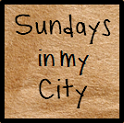The Shoham Forest (or the Shoham Forest Park) is a relatively young forest, located east of the town of Shoham, southeast of Tel Aviv. The rocky forest is rich in heritage sites, the most impressive of which is the Church of St. Bacchus with its recently exposed, magnificent mosaic floor. In the winter and spring, the forest is abundant with seasonal flowers.
The ancient church of St. Bacchus was discovered in 1986 while planting trees. The mosaic was covered until 2013, and was only recently exposed to the general public. This church is considered a "field church" - a church that was not located in a settlement but in an open area between communities. Surprisingly, a marble medallion 67cm in diameter of the Greek goddess Tyche, or as she is called in Latin 'Fortuna', was discovered in the church - an idolatrous element that is not accepted in Christian churches. Tyche is the pagan goddess of fortune and fate, as well as the goddess that protects cities. Finding such an artifact in a church is exceptional. The marble medallion shows the goddess surrounded by two inscriptions. The bottom inscription makes is possible to date it to the year 582-3 CE. The marble medallion is now on display at the Israel Museum in Jerusalem.
At the bottom of the steps of the church is an inscription dedicated to St. Bacchus. St. Bacchus may have been a local saint, or one of two Christian martyrs from Syria (Sergius and Bacchus) who converted to Christianity in the third century and were executed by order of Emperor Diocletian.
The floor of the church is a mosaic that combines geometric patterns and floral motifs. In the nave of the church two circles are depicted: the centre of the eastern circle is the exact centre of the church. In the middle of the western circle is the Greek inscription "This place belongs to the Lord and his only son".
Returning to the main path we continued on, passing orchard trees and rocky areas. Shoham Forest Park itself is quite small. Remains of settlements from the Mishnaic period and a number of ancient caves were discovered in areas of the park. The Israel National Trail, a hiking path that crosses the entire country, crosses the park from north to south in its western part. Our own walk was a gentle one, suitable for the whole family, and was a lovely way spend a sunny afternoon.


A stone quarry that served as an ancient water reservoir is located north of the church, and south of the church is a lime kiln and an ancient wine press. On the western side of the church is an ancient olive press, above. Olive oil was produced in the press by the means of two installations: an olive crushing installation composed of a crushing basin and crushing stone, and a press consisting of a large wooden beam, screws and weights, a collecting vat, and a niche for baskets used to hold the olive mash. The olives brought to the press were mashed in the crushing installation and from there were transferred to baskets to be pressed in this unique installation.
In 2014, a model of the Madaba map was added to the site, above. The Madaba map is part of mosaic floor from the Byzantine period that was discovered in a 19th century church in the city of Madaba, Jordan. The Madaba map is a map of the Middle East. Part of it contains the oldest surviving original cartographic depiction of the Holy Land and especially Jerusalem. It dates to the 6th century AD. The map of Madaba mentions a settlement called "Beit Malgazis", which the archaeologists identify as Horvat Tinshemet ("Barn Owl Ruins"), where the remains of the Byzantine church of Bacchus were exposed. Other settlements mentioned on the map are Hadid (or "Iditim" on the map) and Modi'in.
In the winter the rocky areas around the church are full of flowers including Sitvanit (Steven's Meadow saffron), cyclamen, winter crocus and the narcissi (Narcissus tazetta) which I had set out to find. In January - February the bright red calaniot (anemone) bloom, along with Iris palaestina and Asphodelus ramosus, followed by Cornflower, Anthemis, Helmet clover and other species in March.
From the church we set off for a walk along the marked trail. It passed through the southern part of the Shoham Forest and the "Hill of Cup marks" where a lookout point is located in memory of a soldier who fell in battle in Lebanon in 1994. The name of the hill comes from a large rock located there which has various sized depressions carved into it. The small depressions are known as "cup marks" and may have been formed by cracking nutshells, and the larger ones were used to crush grains and herbs. The view from the lookout point is impressive, extending westward toward the coastal plain and eastward towards the Samaria mountains.Returning to the main path we continued on, passing orchard trees and rocky areas. Shoham Forest Park itself is quite small. Remains of settlements from the Mishnaic period and a number of ancient caves were discovered in areas of the park. The Israel National Trail, a hiking path that crosses the entire country, crosses the park from north to south in its western part. Our own walk was a gentle one, suitable for the whole family, and was a lovely way spend a sunny afternoon.
* This post has been shared on Seasons, Amaze Me Monday, MMM Block Party, Monday Morning Blog Club, The Good. The Random. The Fun., Wordless Wednesday (on Tuesday), Inspire Me Monday, Tuesday's Treasures, Wednesday around the World and Travel Photo Thursday.























































32 comments:
Yes, I can see from the height of the trees that it's a young forest. But the narcissus (daffodil) are blooming in Israel as they are here in California (I saw them today!)
Exciting that they unearthed such beautiful floors! The patterns make me think on the ones I saw in Spain. Are people allowed to walk on them ...or?
Thanks so much Lisa for letting us at All Seasons experience the beauty of Shoham Forest with you! Have a lovely week:)
Oh wow -- that is so cool! Love all the mosaics, I feel like that is so very "ancient ruins" in Israel!
I love this post - has flowers, a lovely family walk, and ancient history. Fascinating info on the church and I like the added map from another site. Let's you see what was there in those times. #MMBC
Your description was so interesting, I almost forgot that you were looking for narcissi. Glad you found some blooming. What an amazing mosaic and remains to give an insight into how people lived their lives. Thank you for sharing. #MMBC
Hi Lisa, that was an enjoyable way to spend an afternoon... It still amazes me that there is anything left to find from centuries gone by, and that field church find must have been an exciting find... The spring flowers you have in Israel seem the same as here, except our narcissi, thrive in the wet fields and not up in the dryer rocky ground.
xx
Enjoyable post. I loved seeing the spring flowers. None here yet and not for a while. Enjoy your week.
What a wonderful site to see. How interesting about a Greek goddess being portrayed in the church. Maybe there was religious tolerance there at that time letting various faiths worship in the same place (The way it should be). Seeing the old press for olive oil would intrigue me since it is something we still use centuries later in day to day life.
Utterly fascinating and beautiful!
Big hugs! ♥
The mosaics are a lovely find, and I like all those flowers peeping out of crevaces. Many thanks for sharing with me, Lisa.
What an interesting place! Finding the flowers had to make you smile :)
Gosh, what a fascinating place! Fabulous pictures of the flowers and the church. I hadn't heard of St Bacchus, but as far as I'm aware Bacchus is the Roman name for Dionysus, the god of wine. Is this likely to be related? Really enjoyed reading about your post after I popped over from the #keepingitreal link up.
Nat.x
What an amazing place to spend your afternoon, it's steeped in ancient history that is so fascinating. I love the flowers, it seems strange to see them growing among the rocks.
#keepingitreal
Lovely! I remembered being surprised as we drove from Tel Avie to Jurusalem all the pine trees. I guess in my mind I had thought Isreal to be completely baron.
What beautiful photos and what an amazing place, so many interesting things. Isn't it lovely to see spring springing #keepingitreal xx
...treasures, both manmade and of nature. I'm constantly amazed by the hidden history that is found. Thanks so much for sharing, enjoy your week and stop back when you can.
What a lovely way to spend the afternoon. That mosaic is beautiful! And you have managed to get some lovely captures along the way. I love cornflower and grow it myself for my wildflower beds :)
Thanks so much for sharing with #MMBC.
How marvelous that this church was discovered and is being preserved. The mosaics are so intricate - what a credit to the artists that the beauty is still there after all these years under soil!
Our daffodils are just leaves at the moment. Looking forward to seeing the colour again. Popping back again from #keepingitreal
It's hard to believe there are still things being discovered after all these years. The colors of that mosaic are beautiful. I just love the rich detail of ancient mosaics.
so beautiful to see spring start to bloom!
Hi Lisa, I do like reading about what others get up to. Popped back from #keepingitreal. Thank you for linking up.
xx
Wonderful place for a day trip. Thanks for linking up this week. #TPThursday
What an amazing place! And beautiful photos!
#TPThursday
The mosaics on the floor of the church look very much like those we saw in Sicily at Villa del Casale. Lovely.
I love to see your flowers! They are so beautiful and fresh. Crocus is mijn lievelings bloem.
I love ancient mosaics - they're just beautiful! And glad you found your flowers too :)
It always amazes me that mosaics can survive after so long. I wonder what will remain of buildings built today in 1,500 years?
This is a very interesting area. The mosaic floors remind me of those I saw in Ephesus. I like the communal aspect with the wine and olive presses.
I can't wait to see wildflowers this year. Winter has been good to us but everything is better when there are flowers around. I am lucky to have natural places to walk close to my house. You need to be in contact with tree, sea, and sky once in a while. Glad you discovered this gorgeous forest! #TPThursday
That is so beautiful - I do love a nice mosaic floor! xx
What a pretty place to visit. It looks like the wild flowers are finally coming out in force, I hope this weekend is nicer than the last one :-)
Amalia
xo
Isn't it fun to find places that are so close and you can discover something new. The blooms are coming up, too. Probably more to come, but I love these delicate flowers pushing up through the dirt.
Post a Comment